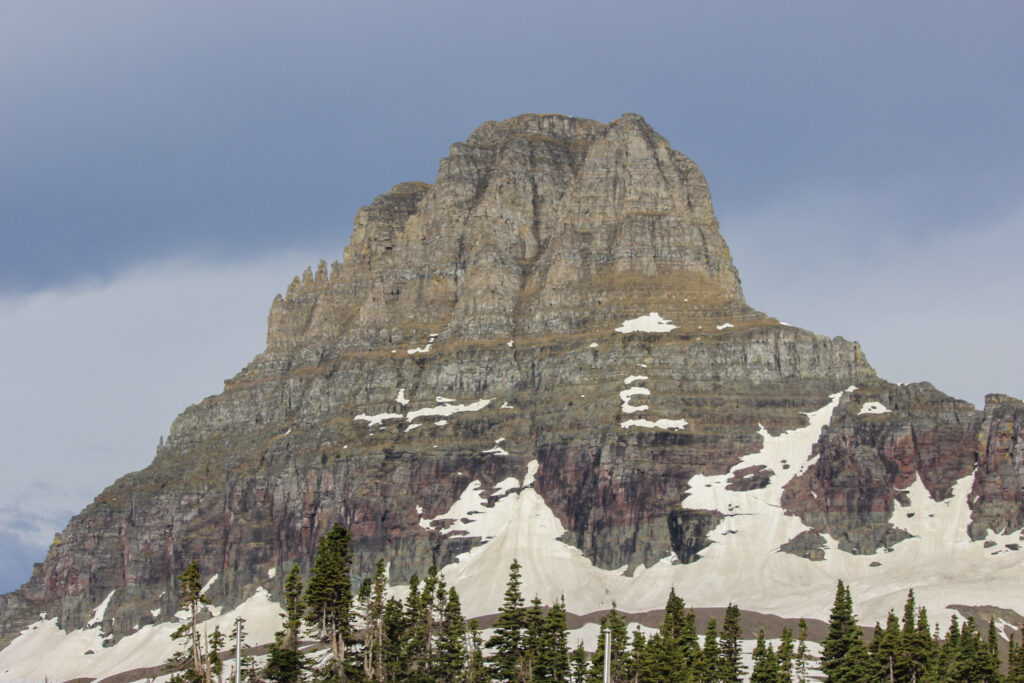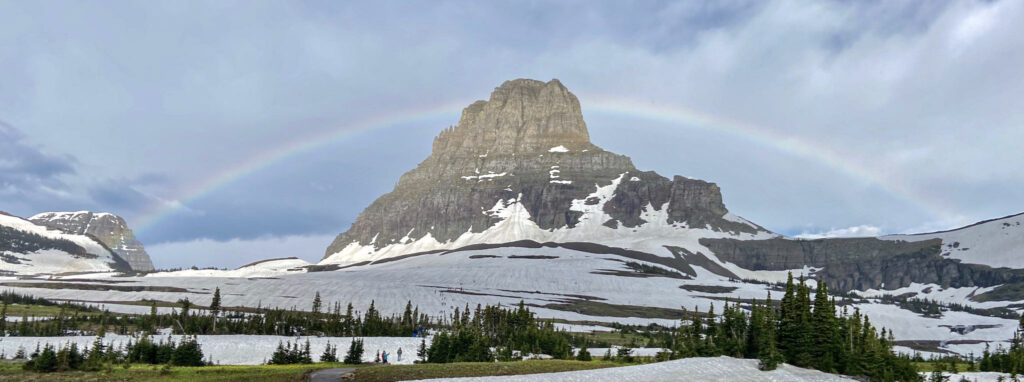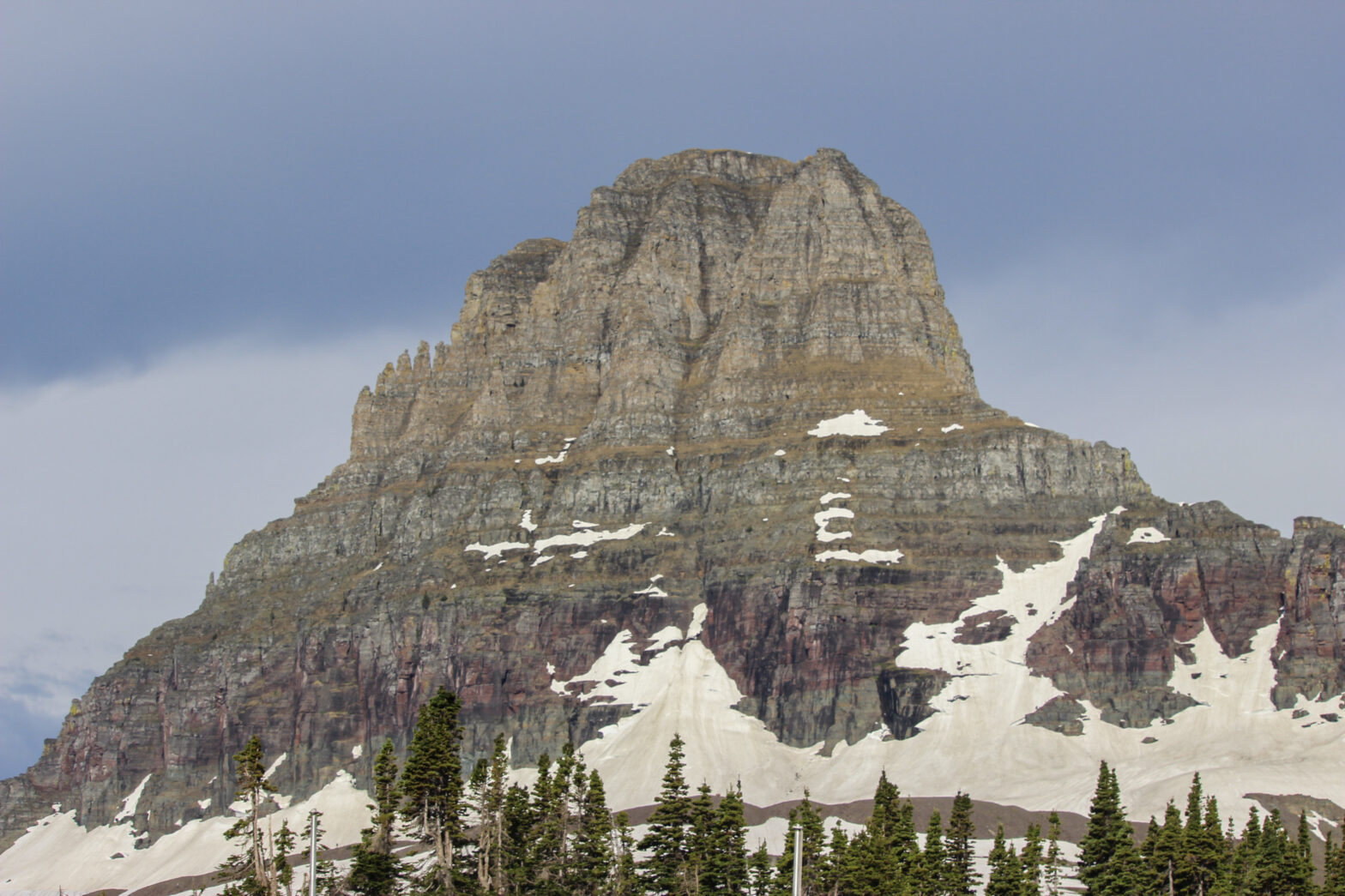Logan Pass is the stuff of legend. Somebody had the bold idea to take a cleft in the continental divide right at the terminus of the Garden Wall, and blast the artery of one of the world’s great national parks right into that cleft. And then someone got the idea to put an entire visitor’s center right behind that cleft. And then Logan Pass came to be.
Elizabeth and I had heard of the legendary parking struggles that can go on at Logan, where you’re miles and miles from the nearest other bathrooms and half a dozen trails depart straight from the parking lot. Part of her haste this morning was wanting to beat the crowds up from the West Glacier side to this very spot. We had done admirably well at that. There were already some cars gathered in the parking lot, with people milling about and enjoying Logan Pass’s first day open. But plenty of open spots prevailed.
For a brief wild second, Elizabeth and I wondered if the best plan of action was to audible wildly. If we could find parking today, wasn’t it in our best interests to hike Highline Trail now, acclimation be damned? That question was quickly squelched as we drove past the Highline Trailhead, which is just across the road from the parking lot. A rope was hanging up in front of the trailhead with a sign announcing the trail’s current closure. Was that a single-day thing, or was the trail closed? If anyone would know, it would be a ranger at the visitor’s center. All the more reason for the stop.
The weather had been fitful all morning. At our cabin, a brisk wind had whooshed off the ridgelines to the west, bringing dark clouds and foreboding skies. Things had seemed to clear up briefly as we drove up the west side of GTSR, with the sun occasionally even poking through. But at the top of Logan Pass, the weather turned “mountain”-y again, with gathering clouds and sputtering rain showers. Even that little bit of rain couldn’t detract from the view. At the edge of the parking lot, a low-rise visitor’s center huddled against the always-inclement conditions, surrounded by defiant snowpiles that had probably begun gathering in October. With a jolt, Elizabeth and I realized we had arrived before the visitor’s center even opened for the day. It was pretty fascinating – it was clear the park was still doing last-second adjustments to get the visitor’s center ready for the summer season, installing guardrails and testing the plumbing. An outdoor area held a bulletin board with the latest forecast, which (surprise!) noted the potential for storms today. Not only that, but there was an *extremely* unwelcome trail status sign. That rope over the Highline Trail would be there to stay, it appeared. Until snow clearing was done on the trail, it was closed to the public. To add insult to injury, the trail up to Hidden Lake that begins behind the visitor’s center was also closed due to widespread snow cover. The late snowstorms that I had been so excited about were really coming home to roost in our vacation plans.
Well, that was disappointing. But nothing could really detract from the world-class view. The parking lot and beyond commanded a sweeping vista of the upper St Mary Valley back to the east, with a prominent view of Going-to-the-Sun Mountain:


There was still plenty of snow to enjoy on the ground, too, even while it rained.

You can sort of see a peak behind us in the latter picture. That is called Clements Mountain, and it’s a quintessential “matterhorn” peak in Glacier Park. It’s more rugged than just about any other mountain in the lower 48, non-Teton division. A big red stripe of rusty rock paints its lower part, and the bottom part of the Hidden Lake Trail heads directly at its left base before disappearing into the deep remaining snowfield.

That’s pretty cool, right? Perfect lighting with the sun shining behind us. Well, when the shower brought some rain in addition to the sun, we got:

Are you kidding? Like, stop it. This day was already magical. Now, at 8:00 a.m, I was willing to commit already: this was going to be one of the best days of my life.
The one place you couldn’t really see from the Logan Pass Visitor’s Center, interestingly, was the Pacific side of the Continental Divide. Sure, we were literally standing right on the divide at the Pass, which cuts the park in half right at our location from north to south. But the visitor’s center was slightly shaded toward the Hudson Bay side of the divide, meaning we couldn’t see the Garden Wall and the Logan Creek valley. This is maybe the most famous part of Glacier National Park. I could have hung around at Logan for an hour just drinking in the sights, but as Elizabeth reminded me, we needed to beat the crowds to Avalanche Creek. The two of us wandered back to the car, plotting what we would do with the Highline Trail closed. Elizabeth took her turn in the driver’s seat, leaving me to gawk at the sights. Up and over the rise we went… holy shit.
